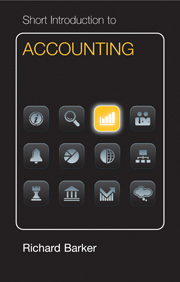Book contents
- Frontmatter
- Contents
- Figures
- Tables
- Introduction
- Part I Introduction to Part I
- 1 A guided tour of the financial statements
- 2 The need for financial information
- 3 Keeping track of economic activity
- 4 Summary of the foundations of accounting
- Part II Introduction to Part II
- Appendix 1 Glossary of accounting terms
- Appendix 2 Further reading
- Index
2 - The need for financial information
from Part I - Introduction to Part I
Published online by Cambridge University Press: 05 June 2014
- Frontmatter
- Contents
- Figures
- Tables
- Introduction
- Part I Introduction to Part I
- 1 A guided tour of the financial statements
- 2 The need for financial information
- 3 Keeping track of economic activity
- 4 Summary of the foundations of accounting
- Part II Introduction to Part II
- Appendix 1 Glossary of accounting terms
- Appendix 2 Further reading
- Index
Summary
The need for financial information
Chapter 1 has given you an overview of the information contained in a set of accounts. This chapter will significantly deepen your understanding by means of exploring the underlying logic of accounting. Our approach will be intuitive, asking basic questions and developing simple worked examples. In this way, we will gradually build up an understanding of why we have cash flow statements, income statements and balance sheets in the first place, how and why these statements are related to one another, and what their inherent strengths and weaknesses are.
A first insight is provided by the meaning of the term accounting itself. In general, of course, an account is a story of something that has happened. A financial account is one such story, and its importance comes from its telling of economic activity. If we want to understand the economics of an organisation, then we read its accounts. Whether we are trying to understand how much money the organisation is making, how much it is investing and growing, or how financially secure it is, our starting point is the accounts.
- Type
- Chapter
- Information
- Short Introduction to Accounting , pp. 27 - 46Publisher: Cambridge University PressPrint publication year: 2011



